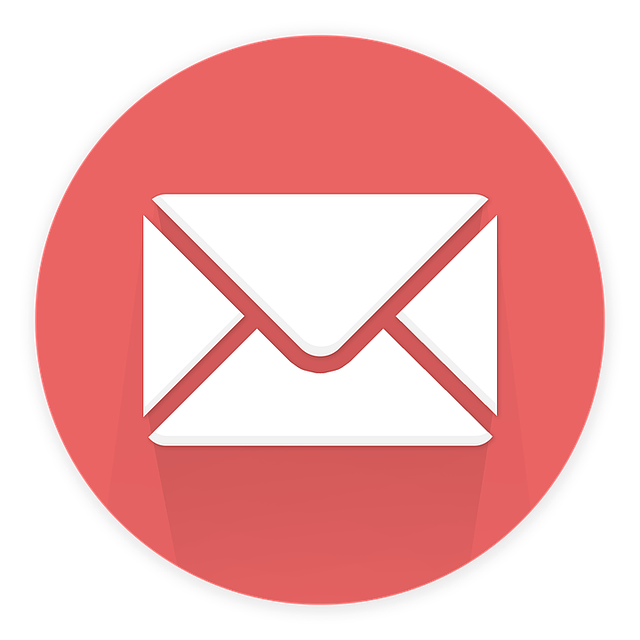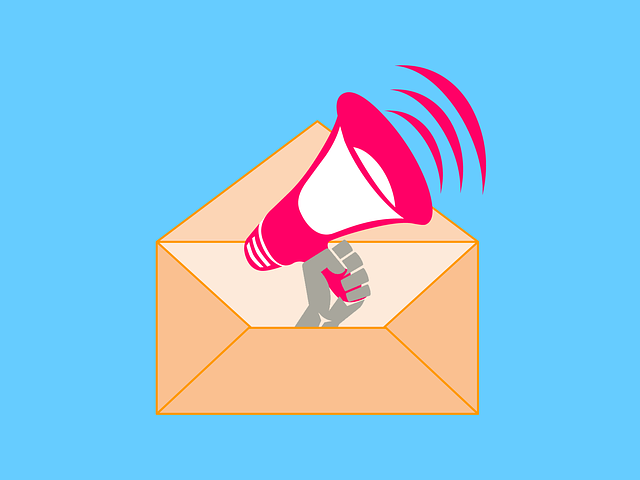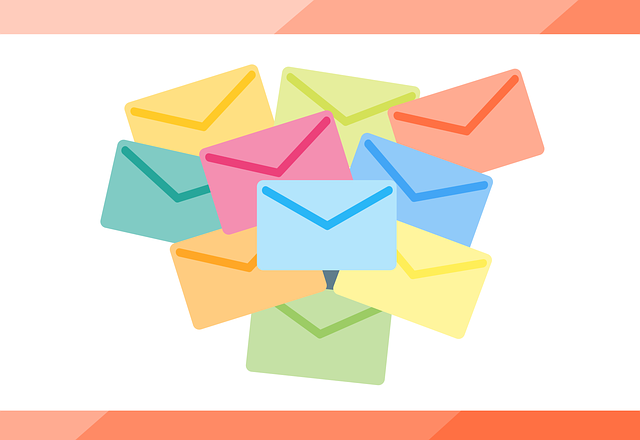Are you looking for an effective way to reach and engage with your target audience in the education and e-learning industry? Email marketing might just be the solution you need. With its increased reach and engagement, cost-effective nature, and potential for higher conversion rates, email marketing has become a popular marketing strategy in the education sector.
By utilizing email campaigns, you can effectively communicate with your audience, build relationships, and promote your educational products or services. Additionally, the personalized nature of emails allows you to tailor your messages to the specific needs and interests of your recipients, increasing the chances of conversion.
However, like any marketing strategy, email marketing also has its challenges. Deliverability and spam filters can pose obstacles, potentially affecting the visibility of your emails. Privacy and data protection considerations are also crucial, as educational institutions must adhere to strict regulations when handling sensitive student information.
In this article, we will explore the pros and cons of email marketing for education and e-learning, helping you make an informed decision about implementing this strategy in your marketing efforts.
Key Takeaways
- Email marketing in the education and e-learning industry is effective for reaching and engaging with the target audience.
- Personalized emails increase conversion rates and lead to a more effective and meaningful learning experience.
- Email marketing in education expands reach, builds a vibrant virtual community, and provides valuable information and resources.
- Targeted messaging and higher ROI are achieved through email marketing, enhancing communication and relationship building with students, parents, and stakeholders.
Increased Reach and Engagement with Target Audience
With email marketing, you can effortlessly expand your reach and foster deeper engagement with your target audience in the education and e-learning industry.
By utilizing email campaigns, you can reach a larger number of students, educators, and professionals who are interested in your courses or educational content.
This increased engagement with your target audience allows you to build a vibrant virtual community that thrives on continuous learning and knowledge sharing.
Through personalized and targeted emails, you can provide valuable information, updates, and resources to keep your audience engaged and informed.
By nurturing this connection, you can establish trust and credibility, encouraging your audience to actively participate in discussions and share their insights.
This increased reach and engagement can ultimately lead to a more effective and meaningful learning experience.
Moreover, it sets the stage for discussing the cost-effective marketing strategy employed by email marketing.
Cost-Effective Marketing Strategy
Save your pennies and watch your marketing efforts soar as you tap into the budget-friendly potential of email marketing for education and e-learning. With limited resources, it’s important to find cost-effective strategies that still deliver results.
Email marketing allows you to reach a wide audience without breaking the bank. Here’s how it can help:
-
Reduced costs: Compared to traditional marketing methods like print ads or direct mail, email marketing is much cheaper. You can save on printing, postage, and distribution costs.
-
Targeted messaging: With email marketing, you can segment your audience and send personalized messages based on their interests and needs. This ensures that your communications are relevant and resonate with your target audience.
-
Higher ROI: Due to its low cost and targeted approach, email marketing can provide a higher return on investment compared to other marketing channels.
Transitioning into the next section, improved communication and relationship building is another key benefit of email marketing.
Improved Communication and Relationship Building
Enhance your connections and foster strong relationships through the power of email communication in the world of education and e-learning. Email marketing provides improved engagement techniques that allow for effective communication with students, parents, and other stakeholders.
By utilizing personalized emails, educational institutions can build trust and credibility, showcasing their commitment to providing quality education. Through regular updates, informative newsletters, and targeted campaigns, email marketing enables the delivery of relevant content to the right audience at the right time.
This not only strengthens the bond between the institution and its recipients but also helps in nurturing long-term relationships. By investing in email marketing, educational organizations can leverage the potential for higher conversion rates, which will be discussed in the subsequent section.
So, let’s explore how email marketing can help in maximizing your institution’s reach and impact.
Potential for Higher Conversion Rates
In email marketing for education and e-learning, there’s a potential for higher conversion rates. This is due to the ability to target specific segments of the audience with tailored messages. By sending personalized emails to different groups, you can effectively address their unique needs and interests. This increases the likelihood of converting them into customers or learners.
Additionally, the opportunity to track and analyze email metrics allows you to optimize your conversion rates. You can do this by identifying what works and what doesn’t. This enables you to make data-driven decisions to improve your email marketing strategies.
Ability to target specific segments of the audience with tailored messages
Maximize the effectiveness of your email marketing campaigns by targeting specific segments of your audience with personalized messages. Personalization benefits are a key advantage of email marketing for education and e-learning. By tailoring your messages to each segment of your audience, you can deliver relevant content that resonates with their individual needs and interests. This level of personalization helps to build stronger connections with your audience and increases the likelihood of engagement and conversions.
However, audience segmentation challenges may arise, such as the need for accurate data and understanding your audience’s preferences. Despite these challenges, the ability to target specific segments of your audience with tailored messages is a powerful tool in your email marketing arsenal. It allows you to deliver highly relevant content that drives engagement and encourages conversions. This targeted approach sets the stage for the subsequent section about the opportunity to track and analyze email metrics to optimize conversion rates.
Opportunity to track and analyze email metrics to optimize conversion rates
By tracking and analyzing email metrics, you can navigate your email marketing campaign like a seasoned sailor navigating through a vast ocean, optimizing conversion rates and ensuring your messages hit the mark.
Tracking effectiveness allows you to measure the success of your email campaigns by monitoring key metrics such as open rates, click-through rates, and conversion rates. These metrics provide valuable insights into how well your emails are resonating with your audience and allow you to make data-driven decisions to optimize performance.
For example, you can identify which subject lines, content, or call-to-action buttons generate the most engagement and adjust your strategy accordingly. Moreover, analyzing email metrics enables you to segment your audience based on their behavior and preferences, allowing you to send personalized and targeted messages.
However, it’s important to be aware of challenges with deliverability and spam filters that can hinder the effectiveness of your email marketing efforts.
Challenges with Deliverability and Spam Filters
When it comes to email marketing for education and e-learning, there are challenges with deliverability and spam filters that you need to be aware of.
There is a risk of your emails being marked as spam or not reaching the intended recipients, which can significantly impact your conversion rates.
To mitigate this risk, you need to carefully manage your email lists and ensure compliance with anti-spam regulations.
Risk of emails being marked as spam or not reaching the intended recipients
Don’t let your emails go unnoticed or end up in the spam folder. Ensure that your important educational content reaches the intended recipients.
Email deliverability and spam filters present challenges in the realm of email marketing for education and e-learning. Despite efforts to create valuable content, there is always a risk of emails being marked as spam or not reaching the intended recipients. This can hinder the effectiveness of email marketing campaigns and impact the overall success of educational initiatives.
To mitigate this risk, it’s crucial to understand how spam filters work and optimize email deliverability by following best practices. Additionally, careful management of email lists and compliance with anti-spam regulations are essential to maintain a high deliverability rate.
By addressing these challenges, educational institutions can maximize the reach and impact of their email marketing efforts.
Need for careful management of email lists and compliance with anti-spam regulations
Carefully managing email lists and complying with anti-spam regulations is crucial if educational institutions want to avoid their precious messages ending up in the digital abyss. Managing email bounce rates is an essential aspect of effective email marketing.
By regularly cleaning up email lists and removing invalid or inactive addresses, institutions can ensure that their messages reach the intended recipients. Additionally, it’s important for educational institutions to focus on ensuring that their email content is relevant and engaging. This can be achieved by personalizing the content based on the recipients’ interests and preferences, and including interactive elements such as videos or quizzes.
By following these practices, educational institutions can increase the chances of their emails being opened, read, and acted upon.
Transitioning to the subsequent section, it’s also crucial for educational institutions to consider privacy and data protection when engaging in email marketing.
Privacy and Data Protection Considerations
When it comes to privacy and data protection considerations in email marketing for education and e-learning, there are two key points to keep in mind.
First, you need to ensure that you comply with data protection regulations and take the necessary steps to protect personal information. This means implementing security measures and safeguarding sensitive data.
Second, you have the responsibility to obtain proper consent from individuals before collecting and using their email addresses. This ensures that you’re transparent about how their information will be used and gives them control over their personal data.
Need to comply with data protection regulations and ensure the security of personal information
Ensuring the security of personal information is crucial when utilizing email marketing for education and e-learning. Data encryption requirements and using secure email service providers are essential to protect sensitive data from unauthorized access. By encrypting data, it becomes unreadable to anyone without the proper encryption key, adding an extra layer of security. Secure email service providers have built-in security measures to safeguard personal information, such as secure sockets layer (SSL) encryption and two-factor authentication. These providers also have strict security protocols in place to prevent data breaches and ensure the privacy of users’ information.
To convey a deeper understanding, consider the following table:
| Data Encryption Requirements | Secure Email Service Providers |
|---|---|
| Encrypt sensitive data | Use SSL encryption |
| Protect against unauthorized access | Implement two-factor authentication |
| Ensure the privacy of users’ information | Follow strict security protocols |
This emphasis on data protection and security underscores the importance of safeguarding personal information in email marketing for education and e-learning. In the next section, we will discuss the responsibility to obtain proper consent for collecting and using email addresses.
Responsibility to obtain proper consent for collecting and using email addresses
To truly engage your audience and foster trust, you must prioritize obtaining proper consent before collecting and utilizing their email addresses.
Consent requirements are a crucial aspect of email marketing for education and e-learning. It is essential to ensure that individuals have willingly provided their consent to receive emails from your institution or organization.
By obtaining proper consent, you not only comply with data protection regulations but also demonstrate your commitment to respecting individuals’ privacy. Failure to obtain proper consent can lead to ethical implications, such as spamming or invading individuals’ privacy.
It is important to clearly communicate the purpose and frequency of emails and provide an easy opt-out option. By doing so, you establish a transparent and trustworthy relationship with your audience, enhancing the effectiveness of your email marketing efforts.
Remember, obtaining proper consent is not only a legal requirement but also an ethical responsibility.
Frequently Asked Questions
How can email marketing help educational institutions reach a wider audience and increase engagement with their target audience?
To reach a wider audience and boost engagement, maximize open rates by crafting compelling subject lines and using eye-catching visuals.
Personalization strategies, such as addressing recipients by name and tailoring content to their interests, can also enhance engagement.
By implementing these tactics, educational institutions can effectively connect with their target audience, fostering a sense of personal attention and increasing the likelihood of meaningful interactions.
Remember, "you catch more flies with honey than with vinegar," so make your emails enticing and personalized to make a lasting impact.
What are some cost-effective strategies that educational institutions can implement in their email marketing campaigns?
To implement cost-effective strategies in your email marketing campaigns for educational institutions, consider utilizing interactive content and personalization techniques.
Interactive content, such as quizzes or surveys, can engage your audience and encourage them to interact with your emails.
Personalization techniques, such as addressing recipients by their first name or tailoring content based on their interests, can make your emails feel more personalized and relevant.
These strategies can help you increase engagement and reach a wider audience without breaking the bank.
How can email marketing improve communication and relationship building between educational institutions and their students or potential students?
To improve communication and relationship building between educational institutions and students, personalization techniques for email marketing in education can be implemented.
By segmenting email campaigns based on students’ interests, preferences, and academic goals, institutions can provide relevant and targeted content.
Best practices for segmentation in educational email campaigns include collecting data on students’ demographics, academic history, and engagement with previous emails.
This allows institutions to send personalized messages, such as course recommendations, event invitations, and important updates, enhancing the student-institution relationship.
What factors contribute to higher conversion rates in email marketing for education and e-learning?
To achieve higher conversion rates in email marketing for education and e-learning, several factors and strategies play a crucial role.
By implementing targeted and personalized content, you can grab the reader’s attention and evoke a sense of urgency.
Additionally, optimizing email design for mobile devices, including clear call-to-action buttons, and offering exclusive incentives can further entice recipients to take action.
Furthermore, regularly analyzing data and making data-driven improvements will help refine your email marketing campaign for maximum conversions.
What are the common challenges faced by educational institutions in terms of deliverability and spam filters in email marketing campaigns?
Email delivery challenges and spam filter issues are common challenges faced by educational institutions in their email marketing campaigns. Ensuring that emails reach the intended recipients can be difficult due to various factors such as email server configurations, IP reputation, and recipient email filters.
Spam filters often flag legitimate educational emails as spam, leading to lower deliverability rates. Overcoming these challenges requires careful monitoring of email deliverability metrics, maintaining a good sender reputation, and implementing best practices to avoid being flagged as spam.
Conclusion
In conclusion, email marketing for education and e-learning offers numerous advantages. It allows you to engage with your target audience effectively and build strong relationships. Increased reach, cost-effectiveness, improved communication, and higher conversion rates are some of the benefits.
However, challenges like deliverability issues and spam filters pose a hindrance. Additionally, privacy and data protection concerns must be addressed.
By carefully considering the pros and cons, you can harness the power of email marketing while being mindful of potential pitfalls.










